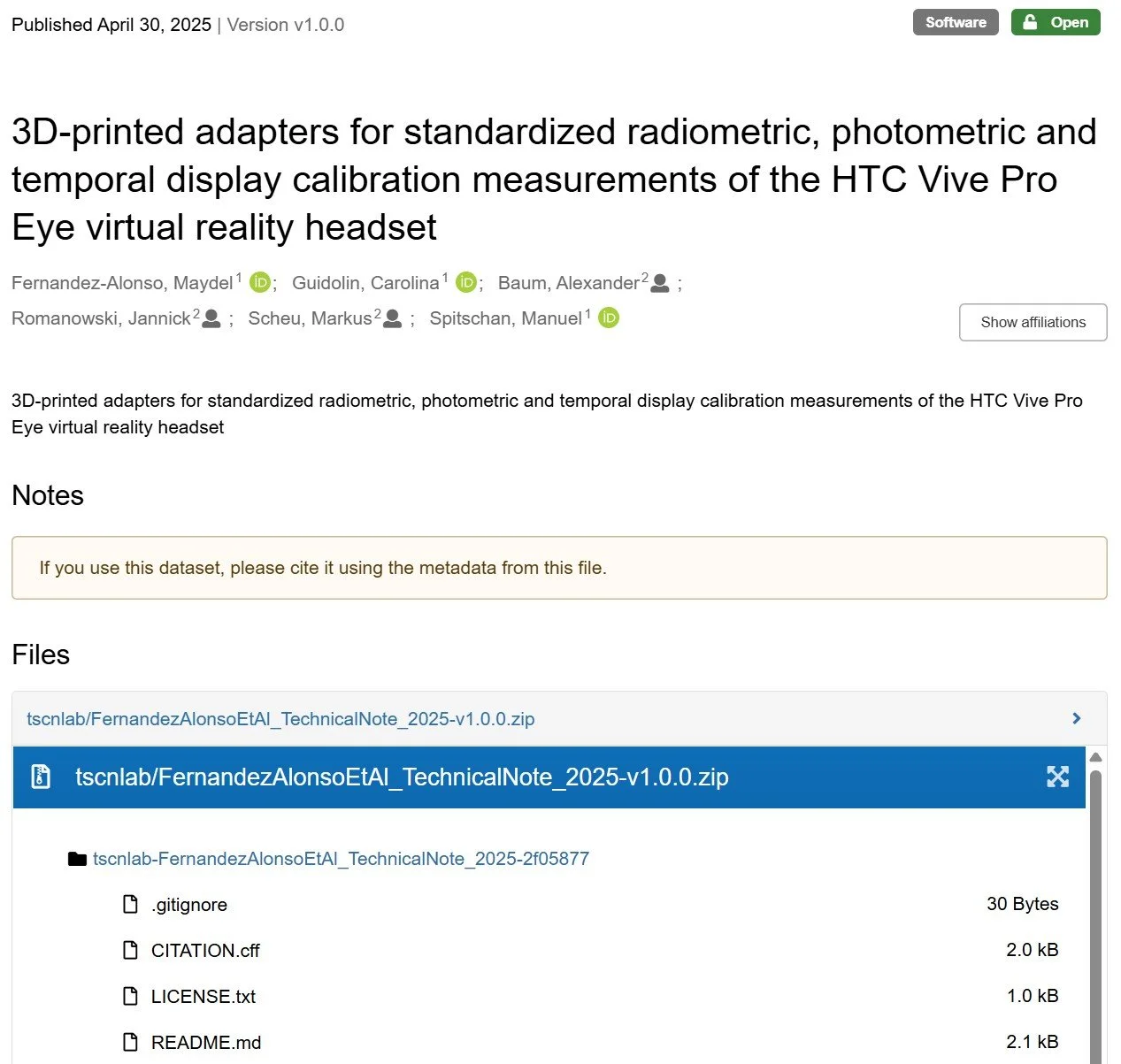Can VR headsets be used in circadian research?
A new publication from Dr. Fernandez-Alonso introduces an innovative solution to a common challenge in circadian and photobiology research: precisely controlling and standardising light stimuli in experimental settings.
Why does this matter? Traditional setups for studying the non-visual effects of light, such as melatonin suppression, often struggle with reproducibility and accuracy. Standard room lighting varies widely and is difficult to control across studies, limiting the reliability of the research outcomes.
To tackle this, the authors developed a novel approach leveraging consumer-grade virtual reality head-mounted displays (VR HMDs). By rigorously calibrating these devices using custom-designed, 3D-printed adapters (available in an accompanying open-access publication: https://doi.org/10.5281/zenodo.15310803), they ensured highly precise, standardised illuminance levels and timing, critical for accurately assessing the physiological impacts of light.Key discoveries:
VR HMDs can reliably deliver controlled, calibrated light stimuli.
Using these headsets at 50% of the total display brightness (90 lux, 91 lux mEDI), robust melatonin suppression was observed in 75% of participants (24 out of 32 individuals), demonstrating the effectiveness of VR-based controlled lighting for circadian research.
This standardised light delivery method greatly enhances reproducibility, enabling consistent, repeatable studies across different laboratories and participants.
Key advantages of using VR HMDs:
Improved flexibility and ease of implementing diverse and dynamic lighting paradigms, including flickering light.
Reduced infrastructure requirements, as VR HMDs eliminate the need for specialised lighting rooms or large, immobile equipment.
Built-in eye-tracking capabilities.
Enhanced potential for multi-centre studies, allowing consistent methodology and calibration across different research locations.
These findings open exciting new avenues for circadian research. Laboratories can now use readily available VR hardware as precise, portable, and individualised light delivery systems. Reliable control over lighting conditions is essential for understanding how light influences circadian rhythms, sleep, and health outcomes.
Read more at: https://doi.org/10.1111/jpi.70051

